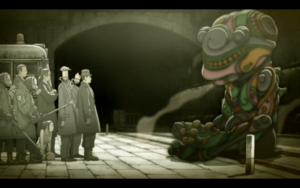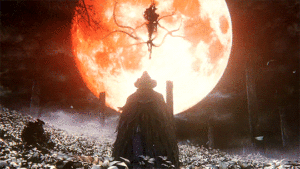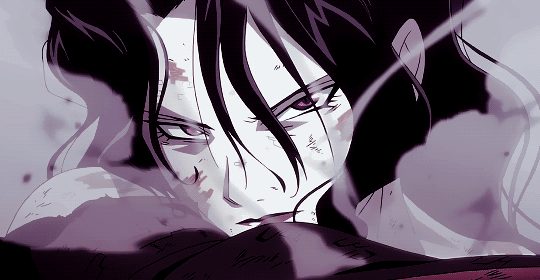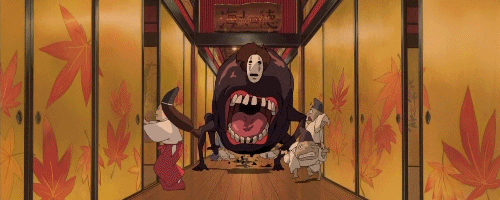It is very hot and very humid, so here’s some cold stuff. Probably not bad to tack on to Servants of the Cinder Queen if you’ve run it and want some more Norse followup.
In the summer, their abandoned lowland settlement looks like a uselessly beautiful array of nautiloid spun-glass armatures. As autumn turns to winter and the snow-laden winds blow, these structures reveal their purpose as mediums for ice, growing inch by inch into palaces and walls and towers, until at last the city is ready for the vinteralfar to come down from the mountains and inhabit their winter capital.
elvingbeast
Those dreadfully transformed by the light of an elf-raised moon. Their beastly new shape recalls the old, but white-furred and fine-boned, walking as easily on four legs as two. Elvingbeasts are as ravenous as they are cunning, reining in their hunger only in service of the vinteralfar. They become larger and stranger with age: limbs, eyes, and jaws splitting and duplicating, fur growing long and filamentous like hyphae, body slowly losing symmetry.
elvercorpse
A vinteralf can raise the human dead to harrow their enemies. They impart corpses with a surrogate soul of moonlight, a wriggling maggot-thing of silvery cinder. It fills the contours of its old self, a new cast of an old mold, sharing mannerism and memory, but retaining its own hungry purpose. The fire that burns in the elfcurst dead is stoked only by blood, and human blood most of all.
Elvercorpses look as they did in life, but with the cyanotic pallor of a snowblown corpse, a certain silver light that flickers nearly imperceptibly in the back of their eyes, a roll to their shoulders and hips that suggests the stride of a wolf or hunting cat. They are impervious to cold, and even the heaviest of them can walk across thick snowfall or thin river-ice without breaking the surface or leaving behind even a footstep.
halflings
Lost Boys, Lost Girls, those who return from being taken into the wild by elves or worse things. They are small, a little malnourished, a little sharp of tooth, with the weird ageless look of a young person who has lived through terrible things, even through the passing of years and decades and centuries. All are marked: missing a ring finger, a notched ear, a deep-slit and scarred lip. These mean things to elves, but even halflings don’t know what.
Thirteen Pearl White Corpses
Thirteen Pearl White Corpses is a lord among the vinteralfar, an unfeeling creature of unseelie beauty. On winter nights of the full moon, they will approach frontier settlements with impossible goods: reams of corpse velvet, ingots of winter glass, sheafs of moly, fist-sized chunks of black myrrh, trading only in the currency of souls and dooms and firstborns.
They appear only atop their utterly ancient elvingbeast, Hati, an incomprehensible effusion of clawed limbs, snarling jaws, and watchful eyes. Thirteen Pearl White Corpses wear always the regalia of the vinteralfar: eyes concealed beneath white veils, lips painted blue, canines capped with silver fangs, wrists and throat wrapped with black jewels, body draped with gossamer shawls and robes embroidered with a spider’s delicacy and complexity. In their ivory-clawed hands they clutch a mirror that freezes everything it reflects.
Spells Written on the back of Thirteen Pearl’s mirror
Winterheart
just treat it like Charm Person in terms of spell level, duration, range, saves, etc
Target loses all human warmth and empathy, becoming unable to treat even their closest friends and family as odious strangers for the duration of the spell. They don’t lose their self interest, and so they can still retain relationships out of a sense of expediency, but are utterly unmotivated by connection and compassion.
Queensmirror
just treat like Phantasmal Force in terms of spell level, duration, range, saves, etc
Target’s sense of aesthetic becomes totally inverted: what was once ugly is beautiful, those who appeared honest seem untrustworthy, fragrance becomes stench, and so on, for the duration of the spell. Their sense of proprietary and memories do not change, but the spell can make everyday objects and experiences viscerally repulsive.
















